It’s been nearly 30 years since East Anglia’s railways received any significant investment. That was back in 1987, when electrification of the line north of Ipswich to Norwich allowed Class 86s to serve the Norfolk city. They ran hourly, hauling stock dating from the 1970s.
Today, there are two trains an hour, formed of stock dating from the late 1970s/early 1980s. The locomotives date from the late 1980s. In RAIL 777’s Analysis, Philip Haigh likened the route to “what you would have found in BR days”… and he’s not wrong. A change is needed.
Railways have grown across the UK, and Anglia is no different. The region has also paid its way in premium payments back to Government that support the rest of the rail network. Yet the newest trains on the Great Eastern Main Line (GEML) date from 2003 - a fleet of 21 four-car Class 360 Desiros that run as far north as Stowmarket. Before that, Anglia Railways had introduced a fleet of eight Turbostars on Norwich-London trains, but they were removed from that line in 2010 - their limited capacity was by then inappropriate for such a busy route.
Class 90s (built 1987-1989) and Mk 3s (built 1977-1985) arrived from 2004. Remember that the Mk 3s were built originally for the electrification of the West Coast Main Line north of Crewe - if no new trains are ordered, they could yet enter a sixth decade of service if they have to continue to run beyond 2020. This is a region crying out for improvements and investment.
Politically there are no heavy hitters on the route, but there is a lot of support for investment. Chancellor of the Exchequer George Osborne and Secretary of State for Transport Patrick McLoughlin both back the ‘Norwich in 90’ campaign, which if introduced could mean trains running between London and Colchester in 40 minutes, London and Ipswich in 60 minutes, and London and Norwich in 90 minutes.
Support has grown for this campaign, and the region now heavily supports the plans. But are supporters looking too far ahead? What about the here and now?
Operator Abellio Greater Anglia (AGA) recorded the third worst satisfaction levels in the latest National Rail Passenger Survey (RAIL 778). Regular infrastructure failures blight the GEML, with the Twitter masses usually (and unfairly) blaming AGA. High-level discussions have been held between AGA and Network Rail management, but problems persist.
Aged infrastructure is a cause, and to this end NR is investing in new overhead line equipment (OLE), while the High Output Ballast Cleaner (HOBC) is being used as part of a multi million-pound scheme to improve the trackwork on the line. Even so, this remains more of a piecemeal project than overall improvements.
In August 2014, AGA’s then new Managing Director Jamie Burles told RAIL that on neighbouring AGA routes, companies had ordered new trains, and that it was now AGA’s turn (RAIL 756).
The same argument could be made for infrastructure. On the East Coast Main Line, platforms are being extended for Intercity Express Programme and new Thameslink trains; the Midland Main Line was to have been electrified (although this has been “paused” by McLoughlin); the North London Line has been modernised; the £6 billion Thameslink scheme is four stops away on the Tube from Liverpool Street; the East London Line crosses the GEML at Shoreditch; the West Coast Main Line upgrade was completed in the mid-2000s; the Great Western Main Line is being electrified; and Peterborough station has been significantly remodelled.
Meanwhile, on the GEML, renewals are being carried out and Norwich station is getting barriers.
Other regions have campaigned vocally (and successfully) for investment, and now Anglia is doing the same. The message is (finally) being heard, but it has taken a lot of hard work and dedication.
Norwich North MP Chloe Smith is co-chairman of the Great Eastern Rail Taskforce. A passionate supporter of the ‘Norwich in 90’ project, Smith tells RAIL: “I’m the Norfolk representative. We have Ben Gummer for Suffolk and Simon Burns for Essex. I have led the campaign for some years. I pulled the four counties together as it was my initiative to do so.
“East Anglia has missed out. It hadn’t pulled together before. It couldn’t be seen to benefit individually. But you can change political will when joined up. We think it can help by having cross-party political support, and we have that.”
Smith was speaking on June 30, less than eight weeks after the General Election, the outcome of which was crucial for the Taskforce’s plans. The proposed GEML upgrade and possible new train fleet relies on a new franchise due to start in October 2016, but Labour had vowed to put a stop to re-franchising. That could have jeopardised plans, but instead the Conservatives won a majority government.
“If Labour had been elected then this would have gone backwards,” says Smith. “East Anglia was particularly vulnerable because of the franchising. I am delighted we are past that agenda now.
“With Patrick McLoughlin remaining there is political stability. I have a huge amount of respect for him. He fully understands this. Passengers are always at the forefront and we cannot go on without this.”
Smith is speaking five days after McLoughlin “paused” Midland Main Line and trans-Pennine electrification. These are massive projects. Were there fears for the GEML upgrade?
“We believe the announcement keeps things on course. We always said it was important for Norfolk and Suffolk to get our fair share. It is a relatively modest investment spread over ten years for Control Period 5 and CP6. When you add strong commitment from the Secretary of State we think our work remains on track. We expect Network Rail to continue.”
Meanwhile, the Taskforce’s work continues: “We are proceeding as planned and analysing what can be achieved.”
With the long-term franchise up for grabs, bidders will meet with the Taskforce.
“We want to make sure the bidders see the passion and what the region needs,” says Smith.
“East Anglia has had historic underinvestment. We know it can prosper, and it deserves this. Thousands of jobs can come to the region. It would give opportunities for people. It’s just not on that London to Brussels is the same journey time as Norwich to London. Passengers deserve better.”
‘Better’ includes new trains. “We have gone all out for new trains. We have the political commitment.”
The question remains: what kind of rolling stock? Passenger numbers are higher the further south you travel along the GEML, so surely commuter stock is required?
“It’s an inter-city and commuter route. The volume of commuters means that it needs all of the requirements. The upgrade is as much political as it is technical.”
Smith is also happy with the perception of the Taskforce: “It has earned a reputation as a great example of campaigning.”
Network Rail is backing the Taskforce, and Anglia Route Managing Director Richard Schofield forms part of the industry’s representation in campaigning for the upgrades.
NR spokesman Sam Kelly says: “To support the Great Eastern Rail Taskforce’s aspiration to reduce journey times between London and Norwich to 90 minutes, we are carrying out a feasibility study looking into what infrastructure upgrades are necessary to achieve this aim. We have just started this study, and it won’t be complete until November.
“The Great Eastern Main Line is a vital economic artery for East Anglia, connecting growing numbers of people and businesses in Essex, Suffolk and Norfolk with the capital. We will continue our work to deliver a better and more reliable railway, modernising track and overhead power lines.”
Kelly explains that NR believes there are three key elements to achieving Norwich in 90: infrastructure upgrades to deliver line speed improvements (what the study is looking at); timetable changes; and the introduction of new rolling stock.
The study will look at four sections on the GEML: Stratford-Shenfield, Shenfield-Colchester, Manningtree-Ipswich, and Ipswich-Trowse Lower Junction. It will consider timescales for any infrastructure upgrades, as well as any changes that may be needed to level crossings along this route.
It is believed that £476 million will be enough for the improvements, although campaigners are adamant that they could unlock economic potential worth almost ten times that figure.
On November 4 2014, the Great Eastern Main Line Taskforce released its The Business Case: Release the Potential report (RAIL 761), which makes the case for investment in the Great Eastern Main Line.
The report states that the current average speed of London-Norwich GEML trains is 63mph, resulting in slower journey times than from London to Stoke, Nottingham, York or Bristol (all further distances than the 115 miles between Norwich and London). It also highlights that currently 18% of peak-hour passengers arriving at London Liverpool Street have to stand (excluding the Metros).
The economy is at the heart of the plans. Europe’s biggest insurance cluster is based in the region, while BT has its European research and development headquarters there. The UK’s largest container port is at Felixstowe, on the Suffolk coast, while the ‘energy coast’ has £50bn of potential investment for nuclear, gas and renewable energy production.
But while the railway requires improvements, no community should have a worse service than it currently does if and when the campaign reaches fruition, Taskforce co-chairman Mark Pendlington told RAIL on June 11 (RAIL 777).
“The one thing is not to start a hare running,” he says. “What we say is the timetable must improve. The quality of the service must not let anyone down. No community must be left with a service worse than it has now.”
Pendlington tells RAIL that lessons must be learned from East and West Coast Main Line timetable recasts, where certain towns and cities had their connections vastly changed, and criticised.
He says that 48,000-50,000 new jobs in the Norfolk, Suffolk and Essex region is the prize for investment “if we get this right”, adding: “One key component is new rolling stock. The trains must be high quality. It is things like reliability, plugs and WiFi. If you are a family or a businessman off to an important meeting, that train should be equipped to get you there.”
A key member of the Taskforce is Jonathan Denby, who has worked on the railways in the region since the 1990s. Now head of corporate affairs for AGA, he has taken a step back from the campaign during the franchise bidding process, but nevertheless he has played a key role in talking to stakeholders, business and passengers, using his expertise and knowledge of the industry to help those championing the cause.
“The early genesis began in 2009/2010,” he recalls. “There was initial interest from Norfolk County Council to start trying to speed up the Great Eastern Main Line, and it was then that the ‘Norwich in 90’ idea was launched.”
For a number of reasons, this didn’t get the traction it needed - not least because of the impending General Election at the time, but also because the economy was in a perilous state. There was some buy-in from stakeholders, but not the critical mass that was required.
Then in early 2012, there was a new franchise and renewed enthusiasm for the plan. Abellio had won a Direct Award to replace National Express, and Local Enterprise Partnerships (LEPs) had replaced the Regional Development Agencies.
Denby explains: “What happened was that post-February 2012, we had like-minded people asking how do you move it forward?”
Denby worked with Smith and Gummer, as well as with Chris Starkie from the LEP, to create a prospectus detailing what was needed and looking at the region as a whole.
“We needed to move things forward. Passengers and users deserve better. The region deserves better, too.
“We knew people wanted different things across the region. We drew them into backing it. MPs, local authorities, commerce, LEPs and rail users backed us. That was the key milestone - it put it on the agenda for the DfT.
“The prospectus brought out a co-ordinated approach and a clear demand for positive change. Recognition at a high level was what was needed - a coherent agenda that focused on a clearly defined region.
“We picked east of the East Coast Main Line, and then prioritised the three key strategic routes that needed improvements: the Great Eastern Main Line, the West Anglia Main Line and Felixstowe-Nuneaton. They were chosen as they had the greatest impact on connectivity across the region, on passengers, communities and the regional economy. It was important to gain widespread stakeholder backing and to be clear about the main priorities. That was the key. It started to give some momentum and focus.”
Abellio as a group has a real sense of rail in the community and can see how it can benefit regions and people, according to Denby.
“One thing that clicked was that Ruud was influenced by his time at Northern Rail. The alliancing between regional stakeholders and the Northern Hub project had influenced thinking. That premise of bringing together key stakeholders was already resonating.”
Denby spells out the need for investment: “East Anglia is clearly a very important region. However, the size of the conurbations, the populations of the towns and cities, is not on the same scale as some other regions. We needed to band together. Previously everyone was batting for their own needs. If we were to succeed, it was especially important for all of us in East Anglia to work together to achieve our aims.
“Over the last decade, we haven’t seen enhancements other than schemes for the Olympics, the Class 379s and High Level Output Specification (HLOS) capacity improvements, which were more about running to stand still than delivering major enhancements.
“But there is growth, so there is a strong case to make sure we secure investment and move forward. On the one hand we may not have the scale of some regions, but on the other the economic case is definitely as strong as anywhere else.”
MPs working together have been very effective, he says, but especially so because they stuck to the key priorities identified in the prospectus (in particular relating to the GEML).
“The MPs are very proactive and supportive with their time and effort. They are constantly continuing to put the political case forward.”
It was that effort that led to Osborne creating the Taskforce in 2013. The Taskforce was given a clear agenda, and Denby believes the fact that it was the Chancellor who set it up gave it extra momentum.
The Taskforce is now focusing on key areas, the first of which is the business case, which has to be made. Denby recognises that there is always competition for money, and so justifications need to be made.
However, the statistics speak for themselves. Forecasts show demand on the GEML into London from Suffolk and Norfolk is expected to grow by 32%, and from Essex by 52%. Then there is the issue of subsidies - Anglia’s network operates with some of the lowest in the country, and AGA is the second least subsidised passenger operator in the UK (receiving 1.5p per passenger mile, against the national average of 12.5p). Finally, the report states the benefit:cost ratio is between 8.6 and 9.5.
Norfolk, Suffolk and Essex generate £60bn in GVA (gross value added) for the UK economy each year, and this is expected to rise to £75bn in the next 12 years. It is one of only two net contributor regions to the Treasury.
Three million people already live in the three counties, and over the next decade the region will gain 205,000 new jobs and 184,000 new homes. The Business Case: Release the Potential report warns that this will lead to some of the fastest rates of passenger growth in the country, with decisions having to be made as to where these new houses will go.
Could NR’s status as a publically owned body affect this campaign? Denby doesn’t think so.
“I don’t see it as an issue. We have to make the case. It is £476m, which in rail speak is not a great expensive project, and it has significant payback. It is a logical investment.”
The last time there was a major change to the service provision was in 1999, when Anglia Railways introduced a half-hourly frequency between Norwich and London.
Says Denby: “This is a different scale. The economic case is clear, but the next question is about how we make it actually happen in practice.”
The line has never officially had a 90-minute journey time between Norwich and London - the fastest was in the late 1990s, when the 0755 from Norwich had a booked 96-minute journey. But it only stopped at Ipswich, so if reintroduced would run counter to Pendlington’s views on a reduced service.
Says Denby: “To get to 90 minutes needs three things. Firstly, you need infrastructure upgrades and higher line speeds, plus the removal of constraints such as level crossings.
“Secondly, there need to be trains capable of 110mph. The ‘90s’ and Mk 3s are, but then there is the issue of track capacity. Faster trains cannot overtake slower ones in many places on a predominantly two-track railway.
“Rolling stock is key. That is clearly inter-city stock for the Norwich services. It is an inter-city service to Norwich now - that’s what customers and stakeholders expect, and it should be faster. The route is not just an inter-city one, but clearly the needs of an inter-city service affect the overall route capability requirements.
“To meet inter-city journey time aspirations you need higher calibre stock. This means better acceleration, quicker braking and minimising dwell times. They must fit the bill for speed, performance and customer comfort.”
Denby says that there are distinct markets along the route. Clearly there is the inter-city market, which has experienced a significant growth in demand along the route over the past 30 years. He says it is clear that stakeholders want an inter-city service on which they can both work and relax. Business travellers rely on the line.
“But equally you cannot ignore that Norwich is only 115 miles from London,” he says. “In the peak period there is a key and significant volume of passengers commuting. It is about getting the right service proposition for everyone.
“It should be remembered that the rolling stock requirements aren’t just about the inter-city trains. You could have new-generation inter-city-quality trains on the main line - and an inter-city-style EMU that gives you two extra vehicles worth of seating capacity compared with a ‘90’, Mk 3s and a DVT. But if you don’t take into account non inter-city services, you’ll end up with inter-city services catching up with non inter-city trains if they cannot accelerate fast enough.
“So another critical priority is to improve the standard and capability of the key Essex commuting services from Harwich, Clacton, Colchester, Braintree and Chelmsford into London.
“There’s an added win of markedly upgrading non inter-city services, as you improve performance as well as perceptions across all customers along the entire GEML.
“With upgraded services all the way along the route you maximise service and journey time benefits, encourage even more passengers to travel, and have an even stronger business case. The railway benefits, the region benefits, and (most importantly) so do the passengers - in Essex, Suffolk and Norfolk.
“And given that the route serves the City of London and some of the key financial services businesses that are at the heart of the national economy, the benefits would be felt wider still on the national stage.”
That the GEML upgrades are even being discussed is testament to the efforts of the Taskforce and those who worked on the 2012 prospectus. Says Denby: “There wasn’t any significant momentum on the GEML. Bow Junction was on the agenda and there was some capacity enhancement work due in CP5, but that was it.”
Timetabling is still clearly an area that needs investigating. Denby says the GEML needs optimising, and that incremental infrastructure upgrades can help. He says that service upgrades are likely to be done in three stages, with incremental infrastructure work in CP5 followed “ideally” by a step change created with new rolling stock, and then further (more significant) infrastructure upgrades in CP6.
One constraint being investigated is Trowse Swing Bridge. The single-track structure south of Norwich station was opened in 1987 and is the only electrified swing bridge in the world. However, if it fails - and it does so more often than is satisfactory - then trains cannot serve Norwich. But even more importantly, it could constrain services in the future.
“At the moment it is a notable, but just about manageable, constraint,” says Denby. “But we are at the tipping point where it becomes a much more significant barrier to progress.
“There are aspirations for Norwich to Cambridge services to run half-hourly in the long term. If you are looking to improve service frequency on Norwich to London and Norwich to Peterborough lines as well, it would not be possible with a single-track bridge.”
All of these service aspirations are being considered, with Denby telling RAIL: “We would say there is a strong case for that bridge to be a permanently fixed structure, but there are hurdles to overcome.” These involve negotiations with the Broads Authorities, and it is early days.
The Taskforce also advocates an additional service per hour between Norwich and London.
“You could effectively put a third path an hour, and that is then the fast path. By doing that nobody loses out, as infrastructure and train improvements mean faster journey times,” says Denby.
“A key element of securing stakeholder backing was that everyone on the route gains and nobody loses out. Potentially you might have the existing two trains per hour - which could be markedly faster than they are now, but with the current stopping patterns - then a third service that is even faster with only two or three stops.”
That could work well during the off-peak periods, assuming the necessary infrastructure and rolling stock upgrades have taken place.
“The peak is a challenge,” acknowledges Denby. “Other than the headline train (say the ‘East Anglian’), it will be really challenging to reach 90 minutes.”
Even so, he says that 90-minute journeys on the quickest services should be possible after the tranche of improvement works in CP6.
“We can get much closer after CP5 work, and new rolling stock towards the end of the decade would enable a significant timetable change. But getting down to around 90 minutes on a number of services will take longer.”
He says that all of the aspirations have always been discussed as a decade-long project.
“What is really encouraging is that there is real, ongoing momentum. With the election result leading to a Conservative government, there is continuity in rail policy. And given that their manifesto made explicit mention of journey time improvements in East Anglia, we can work to make sure that that commitment is fulfilled.
“We also have continuity in the Taskforce with Chloe Smith and Ben Gummer both being re-elected, who have both put real personal commitment and time into moving the agenda forward. Now it is about delivery. We need to make absolutely sure the plans are implemented and delivered.”
Denby is positive about the outcome: “I think the work done has really made the case. We have clear support, and it is about taking the momentum forward and making sure the clear benefits are delivered. We have the best chance we’ve ever had of making this happen.”
A week after RAIL met Denby, McLoughlin announced a “pause” for electrification on the MML and trans-Pennine electrification schemes. Yet in the same speech in the House of Commons, he said: “In Anglia we will bring about modern, faster trains to Ipswich and Norwich in the next franchise.”
Perhaps that momentum and effort is finally paying off…
- This feature was published in RAIL 779 on July 22 2015

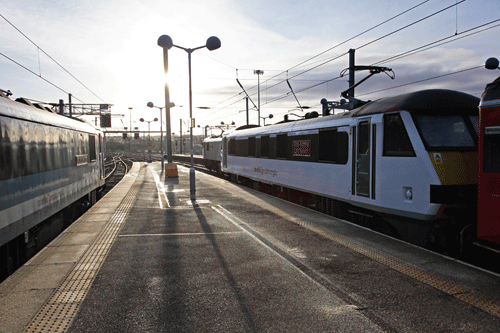
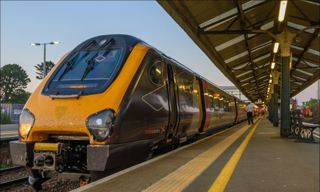
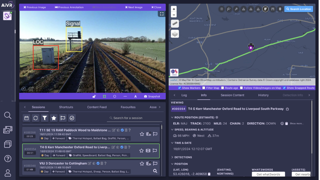
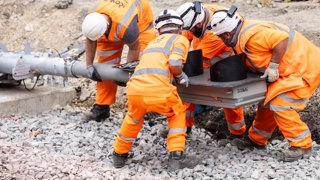
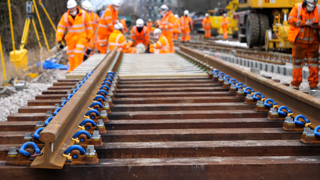










Login to comment
Comments
No comments have been made yet.